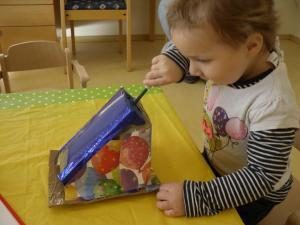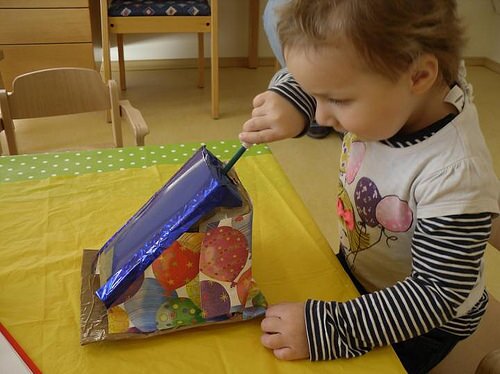
UNIVERSITY OF BIRMINGHAM—Young children will spontaneously invent tool behaviours to solve novel problems, without the help of adults, much as non-human great apes have been observed to do. The findings, from the University of Birmingham, are contrary to the popular belief that basic tool use in humans requires social learning.
Lev Vygotsky, one of psychology’s most influential representatives, claimed that humans only learn how to use tools by learning from others, including parents, and that children’s spontaneous tool use is “practically zero”. However, this study has proven said theory wrong.
The findings, publishing in Proceedings of the Royal Society B, are the first to investigate children’s tool-use abilities with great ape tasks.
The researchers based the tasks on tool behaviours observed in wild chimpanzees and orangutans, and mirrored them for 50 children aged between 2.5-3-years-old.
The findings also suggest that the cognitive abilities underlying these tool behaviours are shared by both humans and their closest living relatives.
The team found that in 11 of the 12 tasks children spontaneously invented the correct tool behaviour. They also found that those behaviours which occur frequently in wild great apes were also invented more frequently by the children, which indicates a large overlap in the physical cognition abilities of humans and great apes.
Eva Reindl, PhD student at the University of Birmingham‘s School of Psychology, said, “We chose great ape tasks for three reasons: Firstly, they are unfamiliar to children. This ensures that children will have to invent the correct behaviour instead of using socially acquired, previous knowledge. Second, they are ecologically relevant and third, they allow us to make species comparisons with regard to the cognitive abilities involved.”
In one of the twelve tasks, children needed to use a stick as a lever to retrieve pom poms from a small box. Similarly, great apes use twigs to remove kernels from nuts or seeds from stingy fruits. The tasks could only be solved by using a tool, but children were not told that.
Dr Claudio Tennie, Birmingham Fellow, explained, “The idea was to provide children with the raw material necessary to solve the task. We told children the goal of the task, for example to get the pom poms out of the box, but we never mentioned using the tool to them. We would then investigate whether children spontaneously came up with the correct tool behaviour on their own.”
Miss Reindl noted, “While it is true that more sophisticated forms of human tool use indeed require social learning, we have identified a range of basic tool behaviors which seem not to. Using great ape tasks, we could show that these roots of human tool culture are shared by great apes, including humans, and potentially also their last common ancestor.”
_______________________________________________
One of the participants is using a stick with Velcro® at its ends to retrieve sponge scourers with stickers attached from the box. This task is based on wild great ape tool use (fishing for insects with twigs). Credit: unibirmingham
_______________________________________________________________
In the future, the researchers will try to extend their findings by presenting children and great apes with tool tasks that are completely novel to any of these species, e.g. tasks based on tool behaviors observed in non-primate animals but not shown spontaneously by children or great apes.
Source: University of Birmingham news release.
_______________________________________________
______________________________________________
Travel and learn with Far Horizons.
____________________________________________
This richly illustrated issue includes the following stories: Recent findings shedding new light on the whereabouts of the remains of Philip of Macedon, father of Alexander the Great; how an archaeologist-sculptor is bringing bones of the dead back to life; archaeologists uncovering town life at the dawn of civilization; an exclusive interview with internationally acclaimed archaeologist James M. Adovasio about what makes the Meadowcroft Rockshelter prominent in the ongoing search for the first Americans; what archaeologists are finding at the site of the ancient city of Gath, the home town of the biblical Philistine giant, Goliath; and how scientists are redrawing the picture of human evolution in Europe. Find it on Amazon.com.







